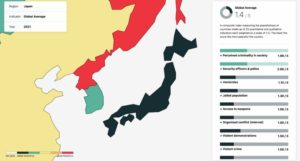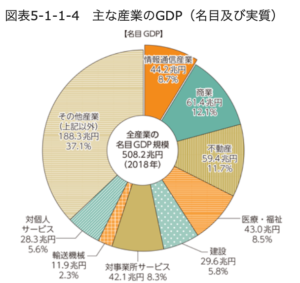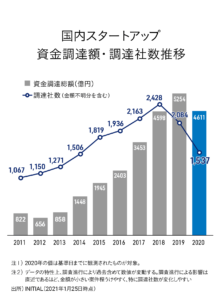Tech industry in Japan.
Tech is a vague and broad term. It includes pretty much any company or industry that involves advanced technology or includes an automated process in the business operation. In this article, we would focus mainly on the software technology companies, commonly known as IT (Information Technology).
8 things you should know before going tech in Japan
Are you currently living in Japan and tried to crack into tech? Or are you living overseas and trying to come to Japan and work at an IT company? At xkula.com, we came up with 8 points you should definitely know if you have any plans in joining tech in the future.
1. Tech is growing in Japan
2.DX is a big trend in Japan
3.How Covid-19 affects tech in Japan
4.The tech ecosystem in Japan
5.Tech startups in Japan
6.Tech Salary and work condition in Japan
7.Programmers and software engineers in Japan.
8.Career development in Japan
Why come to Japan to work for tech in the first place?
Before we dive into the 8 points of what you should know before going tech in Japan, let’s talk briefly about why you might want to work in Japan in the first place. If you would like to skip this part, please scroll down to the section where it says, ” Tech is growing in Japan”.
If you are a new grad who attended a university in Japan or somebody who has been working in the Japanese job market already, it might be natural to think that your next new job would be a company located in Japan. However, if you are not a Japanese person, or have been working somewhere else but Japan, what would be the reasons to work in Japan in general?

Perks of working in Japan.
The thought of moving to Japan and work in Japan might have occurred to you because you were interested in the culture of Japan. Anime, manga, J-pop, and video games… the list goes on. If you are interested in any of these, you will definitely get better access to them than outside of Japan.
For example, If you wanted to see a newly released anime movie in the theatres, it might be hard to find it outside of Japan. If you live in the United States, you might have to go to Los Angeles to see that anime movie after a year of the official release in Japan. The benefit might be that you can get first access if you live in Japan. You can get manga or Japanese video games faster than if you lived outside of Japan.

However, this is changing due to the increase of titles on online streaming platforms such as Netflix and some titles are even releasing on Netflix simultaneously as they do at theatres. Also, you might be able to get your hands on physical goods quicker because of the speed improvement in international shipping, such as Amazon and AliExpress.
Nonetheless, there are milliards of sightseeing to do in Japan, whether it’s a historic place or a famous scene out of an anime. These places are pretty easily accessible regardless of the place you live, because of the efficient transportation system. To actually go travel to these places, it would definitely be nice if you lived and had a base in Japan. This might be hard to do if you lived outside of Japan.
Price of Goods and Rent in Japan.
You might have an image that everything in Japan is expensive and that may be partially true. This was certainly true in the 1980s when Japan was experiencing an economic bubble and land prices and common goods prices were all inflating at an unprecedented level. However, in the 2020s, if you know where to find you will actually be able to live with a fairly low budget. (We will write a full article about this in the future. Coming soon…)
For example, if you were working as a software engineer in San Francisco or Silicon Valley area, the cost of living would be much higher than that in Tokyo.
NUMBEO.com has a comparison of the cost of living between Tokyo and San Francisco.
| Indices Difference | |
|---|---|
| Consumer Prices in Tokyo are 8.33% lower than in San Francisco, CA (without rent) | |
| Consumer Prices Including Rent in Tokyo are 34.96% lower than in San Francisco, CA | |
| Rent Prices in Tokyo are 59.57% lower than in San Francisco, CA | |
| Restaurant Prices in Tokyo are 41.86% lower than in San Francisco, CA | |
| Groceries Prices in Tokyo are 6.65% lower than in San Francisco, CA | |
| Local Purchasing Power in Tokyo is 25.16% lower than in San Francisco, CA | |
(Indices above are posted on NUMBEO.com)
When looking at the graph above, the noticeable difference in the cost of living between Tokyo and San Fransico is the Rent Prices. When you look at the rent prices, Tokyo is 59.57% lower than that of San Fransico.
Also, this website provides that as of July 2021, the average monthly net salary (after tax) in San Francisco is 7,594.55 $. On the other hand, the average monthly net salary(after tax) in Tokyo is 3,697.15 $.
In conclusion, this site states that you would need around 5,463.76$ in Tokyo to maintain the same standard of life that you can have with 8,400.00$ in San Francisco, CA (assuming you rent in both cities). So basically the cost of living is cheaper in Japan, and if you know where to look, you can even lower the cost of living.
Safety and ease of transportation.
Public safety and the ease of transportation might be another factor of why you might want to live and work in Japan. Based on the Global Peace Index published by The Economist, Japan is ranked #12 out of every country in the world.

For transportation and logistics, Japan ranks 5th according to the LPI (Logistics Performance Index) published by THE WORLD BANK in 2018. From these numbers, it can be said that Japan is one of the easiest countries to travel to without feeling physical danger.
About Tech & IT industry in Japan
Now let’s get into the 8 points you should definitely know before going into the tech industry in Japan. Below we listed up the things that we thought are most important for job seekers to know about the tech & IT job market in Japan.
1. Tech is growing in Japan
The technology market in Japan takes over a large portion out of the nation’s GDP. Below is a piechart of Japan’s GDP in 2018, published by the Ministry of Internal Affairs and Communications. According to this chart, it says that Information technology industry accumulated 44.2 trillion yen. That is approximately 8.6% of the total GDP. The Ministry also plans to increase the GDP by 132 trillion yen by using IoT. From this, it is safe to say that the tech industry is growing and it seems like this trend will continue in the future as well.

2.DX is a big trend in Japan
Digital Transformation, in other words, DX is a big trend in Japan, just like a lot of other countries in the world. If you are not from Japan, you might have an image that Japan is one of the leading countries in terms of digitalization. However, when looking at the “Country-level digital competitiveness rankings worldwide as of 2020” provided by Statista, Japan ranks at number 27 out of all countries, and it is desperately trying to make its transition starting with big corporations.
The most notable thing you might notice when you work at a Japanese company is that they still have a fax machine. Not just having it, but workers actually use the fax machine daily. Since a lot of big corporations still uses the fax machine, small to mid-size companies are also semi-forced to use the fax machine as well.
Companies are gradually transitioning from these legacy systems to a more digital base system, but in order to speed up the transition, the Japanese government implemented the “Ministry of Digitalization”. This new ministry is planned to launch on the 1st of September and its main purpose will be to swiftly be able to process and handle government data, by working closely with private sectors. They plan to hire 500 workers, and the ministries’ slogan is “Government as a Startup”.
3.How Covid-19 affects tech in Japan
Japan was hit with Covid-19 in the spring of 2021 and went into a lockdown in the first weeks of April. With the arrival of Covid-19, came a major shift of digitalization in Japan. Especially in the field of e-commerce. This is because the government basically called its citizens to refrain from going outside, and instead try and buy things online.
Before Covid-19, out of all the commercial goods transactions, the percentage of transactions occurring online was only 6.76% in 2019. This is quite low compared to that of South Korea or the United States.
With Tokyo going under its fourth lockdown from the 12th of July, it seems that the shift from real-life purchases to online purchases will only continue to grow from here.
4.The tech ecosystem in Japan
The tech ecosystem may differ from other countries, in the sense that the Japanese tech ecosystem doesn’t have a dominant tech company. The only tech company that might be considered as being dominant may be Softbank. Softbank controls LINE and Yahoo! Japan. LINE is the most popular communication tool in Japan, and Yahoo! Japan provides a very popular search application. Softbank also owns Paypay and is planning on monopolizing the financial payment market.
However, other than that there isn’t a GAFA or FAANG in the United States and a BATH of China in Japan. Under this context, it may be said that there are some growth areas for companies to thrive in the fields that aren’t still monopolized by a dominant player.
5.Tech startups in Japan
Japan has a bustling startup ecosystem with a lot of startups. According to the “Domestic Startup Funding Trends for 2020” research made by INITIAL, there were 2084 companies that executed fundraising in 2019, and the total amount raised accumulated was 525.4 billion yen. However, there aren’t a lot of companies that are considered a unicorn. Compared to the United States Japan’s tech ecosystem may seem quite small.

According to an article by TechCrunch, in 2020 investors poured in a total of $156.2 billion in startups within the United States. By simply comparing the United States and Japan, there is about 30 times the difference in the amount of fundraising or investments surrounding the startup market.
In 2020 the United States had 228 companies unicorns and Japan had 3 unicorns. However, Japan’s startup market is growing as a whole. Major investment firms such as KKR and Bain Capital have invested in Japanese startups and the trend of foreign investment towards Japanese startups is also increasing.
6.Tech Salary and work conditions in Japan
In Japan, tech company does not necessarily pay more than companies in other industries. There was a piece of news recently that Google was recruiting software engineers from the NTT by presenting them with much higher compensation. Companies in Silicon Valley are known for compensating a lot for their workers, and especially a lot for software engineers.
In the past two or three years, some large corporations are trying to compete against these global tech giants. For example, NEC announced that it will pay new grads who received a high grade on their research paper, an annual salary of up to 10,000,000Yen. Also, companies like Sony and NTT communications are trying to compete against the global tech giants as well.
However, the average annual salary for engineers/programmers in Japan is 5,922,000 Yen. On the other hand, the average annual salary in Japan is 4,598,000 Yen. From here, you can tell that engineers /programmers get paid higher than the national average but not necessarily significantly higher.
7.Programmers and System Engineers in Japan.
With Covid-19 and, the major push towards DX (Digital Transformation) from the government, it can be said that there will be a long-lasting need for programmers and software engineers in Japan.
However, in Japan, the compensation and authority, job role within the company may differ depending on which position you are in. For example, usually in Japan, a position called SE (System Engineer) is someone who designs the structure of the system and also does client management.
On the other hand, PG (programmer) is someone who codes and makes the system into reality. Usually, programs code as the structural design decided by the System Engineers and also responsible for testing the product. After the product is complete, the SE will deliver it to the client.
In general, SE has a higher total compensation than PG. According to Geekly, the average annual salary of PG is ¥4,160,000. The average annual salary for SE is ¥5,510,000.
8.Career development in Japan
In a lot of cases, unless it is a foreign company, a Japanese company will usually pay its SEs higher than its PGs. In Silicon Valley, there are a lot of cases where a very skilled programmer making a lot of money, but that would be extremely rare in a Japanese company.
For career development in Japan, because of the compensation level and talent level, a lot of programmers decide to switch companies to foreign companies such as GAFA or FAANG.
Another passage might be to switch from being a programmer to a system engineer. This is a common career path even in Japan, and it certainly helps to have knowledge about how the system actually works when you are working as a system engineer and managing the project as a whole.
However, strangely enough, being able to code is not a requirement for becoming a system engineer in Japan. Actually, there are a lot of system engineers in Japan who have never coded in their life or even never studied a scientific field of study such as physics or math since graduating high school.
Therefore, a STEM background is definitely helpful but is not a requirement when trying to land a system engineer job role in Japan.
In conclusion
In conclusion, Japan has a lot to offer for those who are trying to work in Tech. With the demand towards digitalization growing more than ever, it can be said that now is the best timing to work in tech in Japan.
However, you might want to keep in mind that compensation might not be so high in Japan compared to areas like Silicon Valley and that the tech industry (especially the startup ecosystem) isn’t as big as in the United States.












